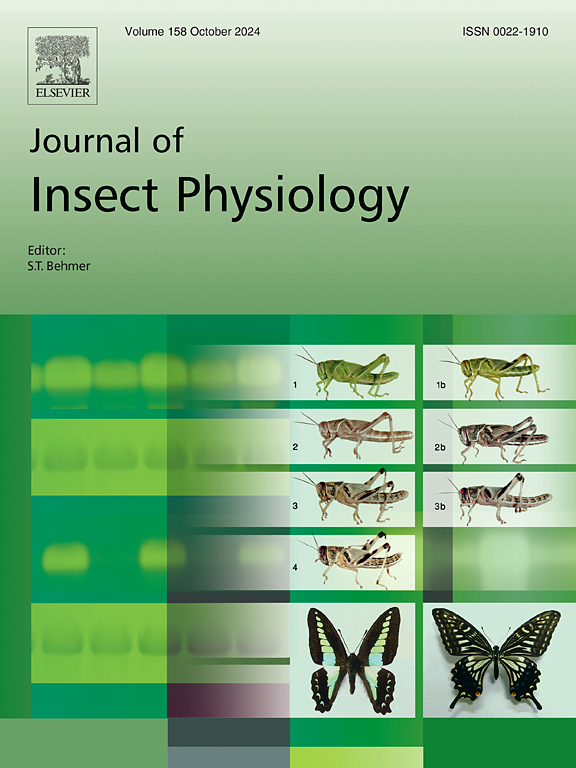Male accessory gland-derived carboxypeptidase B regulates sperm activation in the spermatophores of Grapholita molesta
IF 2.3
2区 农林科学
Q1 ENTOMOLOGY
引用次数: 0
Abstract
Grapholita molesta is a globally significant fruit-boring pest. Females maximize reproductive efficiency through optimal sperm utilization following a single mating event. Post-mating sperm activation is critical for reproductive success. Although sperm activation in G. molesta relies on the spermatophore microenvironment, the molecular regulators and associated metabolic pathways remain poorly understood. Here, we report that a male accessory gland-derived carboxypeptidase B (GmCPB) is essential for this process. GmCPB exhibited peak expression in the accessory gland during the pre-maturation stage; RNAi-mediated knockdown of GmCPB in males substantially reduced fertility, while mating success and longevity were unaffected. Mating with GmCPB-knockdown males had no effect on spermatophore formation or sperm transfer, whereas sperm activation was markedly impaired. Untargeted metabolomic analysis further revealed that multiple metabolic pathways exhibited significant dysregulation in the spermatophores of females after mating with GmCPB- knockdown males. Our findings propose a functional framework for CPB characterization and establish a molecular foundation for population suppression strategies targeting male accessory gland proteins in G. molesta.

雄性副腺体来源的羧肽酶B调节毛蚶精囊中精子的激活。
葡萄螟是一种全球重要的果螟害虫。雌性在单次交配后通过最佳的精子利用来最大化生殖效率。交配后精子的激活对生殖成功至关重要。尽管毛蚶的精子激活依赖于精子包囊微环境,但其分子调控因子和相关代谢途径仍知之甚少。在这里,我们报道了一种男性附属腺体衍生的羧肽酶B (GmCPB)在这一过程中是必不可少的。GmCPB在前成熟阶段在副腺中表达高峰;rnai介导的GmCPB敲低显著降低了雄性的生育能力,但交配成功率和寿命不受影响。与gmcpb基因敲低的雄性交配对精子包囊形成或精子转移没有影响,而精子激活明显受损。非靶向代谢组学分析进一步揭示,与GmCPB敲低的雄性交配后,雌性精囊中的多种代谢途径出现了显著的失调。我们的研究结果为CPB的鉴定提供了一个功能框架,并为针对雄副腺蛋白的种群抑制策略奠定了分子基础。
本文章由计算机程序翻译,如有差异,请以英文原文为准。
求助全文
约1分钟内获得全文
求助全文
来源期刊

Journal of insect physiology
生物-昆虫学
CiteScore
4.50
自引率
4.50%
发文量
77
审稿时长
57 days
期刊介绍:
All aspects of insect physiology are published in this journal which will also accept papers on the physiology of other arthropods, if the referees consider the work to be of general interest. The coverage includes endocrinology (in relation to moulting, reproduction and metabolism), pheromones, neurobiology (cellular, integrative and developmental), physiological pharmacology, nutrition (food selection, digestion and absorption), homeostasis, excretion, reproduction and behaviour. Papers covering functional genomics and molecular approaches to physiological problems will also be included. Communications on structure and applied entomology can be published if the subject matter has an explicit bearing on the physiology of arthropods. Review articles and novel method papers are also welcomed.
 求助内容:
求助内容: 应助结果提醒方式:
应助结果提醒方式:


